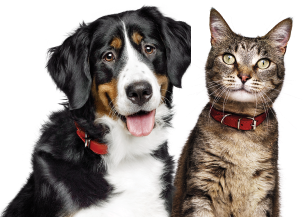TMuch like her color and pattern varieties, the Domestic shorthair cat personality spans a vast territory. Domestics can be playful, affectionate, quiet, vocal, docile, or calm—but are often social, points out Trupanion. She is not an aggressive cat by nature, which makes her a terrific companion for children and seniors, and, with a proper introduction period, she's a great playmate for cats, dogs and other pets.
The Domestic Shorthair is considered a working cat because of her endurance skills, such as balancing and leaping, as well as her superb hunting instinct. These characteristics are often reflected in her playful personality.
She'll need an outlet for all this energy, so provide her with a safe perch from which she can observe the great outdoors and practice her balance and agility skills. She'll want to keep an eye on the birds in the garden and on her pet parents in the living room at the same time. With her keen sense of surroundings, the Domestic also knows when it's a good time to curl up in the nearest available lap for an afternoon snooze.
As noted, the Domestic has an easy-going personality, but she does need an outlet for her cat instincts, such as hunting. Therefore, it's important to keep her occupied with creative cat toys like feather toys, jingly balls to roll around the house, and even an empty cardboard box in which to play hide-and-seek. A fun scratching post offers a place to trim her claws (scratching is a necessary and instinctual behavior for cats), and it is a great alternative to the fabric on your couch.
National Geographic shares that these hunting skills are particularly effective at night, when their light-reflecting eyes allow them to see better than much of their prey. Cats also enjoy acute hearing. Because of this inherently strong pattern of behavior, your household kitty may be quite active at night, but try to keep in mind that it's just part of her nature to wake you up at 4 a.m. to ask for a snack.
The Domestic Shorthair requires minimal care and is not predisposed to disease or other illnesses. However, the American Society for the Prevention of Cruelty to Animals emphasizes that they may be prone to overeating, which can lead to obesity and the constellation of health problems related to carrying extra pounds. Choose a healthy cat food that will provide her with the nutrition she needs to live a happy, energetic life.
It's important to maintain a routine grooming schedule for your furry friend. Regular trimming of claws and brushing of teeth will keep your kitty in tip-top shape, along with regular brushing with a rubber or stainless steel comb or brush. In addition to yearly check-ups with your veterinarian, establishing a maintenance routine with your kitty from an early age will help make it a stress-free process for both of you. With proper care, the Domestic Shorthair cat can live up to twenty years.
The Domestic Shorthair cat can trace its roots back to the early days of pioneer settlement in North America and were considered working cats because of their dedicated rat-catching. Healthy and rugged, it's easy to see why the Domestic became a favorite of early settlers. In exchange for room and board, the cats worked hard to keep barns and food storage facilities free from rats and other pests (and, thereby, keeping their human families free from disease). That's how the Domestic ended up on the voyage ships to North America. These kitties were amiable and inexpensive labor. All they ask for in return is a good meal, a warm bed, and some love from their humans.
Despite remaining a non-pedigreed cat, the Domestic Shorthair is accepted by the Cat Fanciers' Association (CFA) in the Household Pets category, where she can compete for the Grand Household Pet of the year award. Household pets are judged in one group without regard to sex, coat length, age, or color, explains the CFA. They are judged instead for their uniqueness, pleasing appearance, unusual markings, and sweet dispositions. This means that, despite not being purebred, your fur baby can have her chance in the spotlight after all.
If you are looking for a loving, friendly kitty with whom to share your life, you'll find that the Domestic Shorthair is an ideal pet, no matter her pedigree.






















